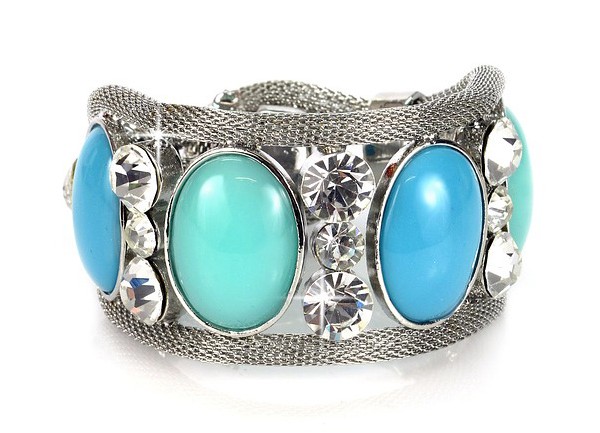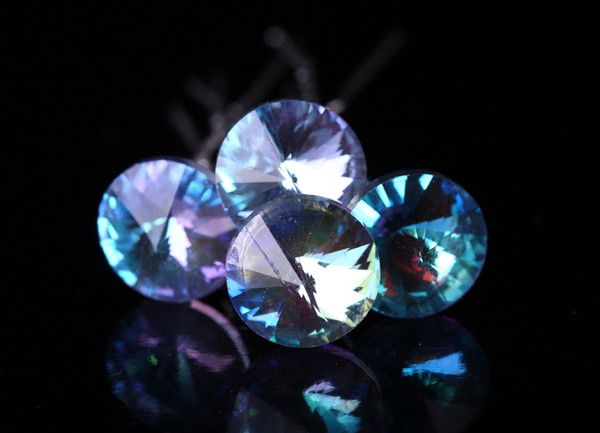Is Turquoise For You?

The beauty and history of turquoise is hard to surpass! Seeped with history and mystery it is truly a captivating stone. Turquoise history dates back over 6000 years. Archeological and literary references to the stone predate the Christian era by five millennia. It has been unearthed in tombs from ancient Egypt – specifically the 4 bracelets of Queen Zar, found on her mummified arm. These date back to the second ruler of the Egypt’s First Dynasty, approximately 5500 B.C. Aristotle and Pliny both refer to turquoise. Marco Polo even wrote about it. Turquoise has always been considered a stone of life. It also has a long standing history of over a 1000 years with Native Americans who have used it extensively for protection and healing. The stone was also used in religion, art, trade, treaty negotiations, and jewelry. Turquoise’s use as a healing stone reaches far – it has been used for headaches, eye problems, fever and insect bites to name just a few. It was ground to a powder then it was drank to cure stomach ailments. Turquoise also has significant metaphysical properties. It is a harmonizing stone that is said to alleviate nervousness, help with problem solving, relieve stress from a hectic life, and promote friendship. It is also well known for its protective qualities and many cultures carry a turquoise stone with them at all times. Turquoise is often strung on beads, carved into animal fetishes, or combined with other stones such as onyx, amethyst, or coral. Its color ranges from brilliant sky blue to green and it usually has black or brown veins running through it. In jewelry it is very popular set in sterling silver. Silver enhances the natural colors of the turquoise much better than gold. Turquoise is found in North American in the dry areas of Arizona and New Mexico. It is also found in China, Iran, Turkey, Egypt, and Persia. Wax Treated: Much of the turquoise from China is wax impregnated. The paraffin treatment deepens and stabilizes the color but only affects the surface.Turquoise can be rather porous and chalky and is often not suitable for jewelry until it is treated. There are various processes that are used on turquoise. Stabilization is a treatment which uses a resinous substance. The process uses pressure and heat to fill the microscopic gaps in the stone with plastic resin. When cured the product is a treated stone hard enough to cut and polish. Stabilization allows genuine but lower grade turquoise to be used in jewelry. Stabilization helps to keep the stone from chipping and prevents changes in color from contact with skin oils. Wax treatment is very common with turquoise from China. Paraffin wax is impregnated into the turquoise to deepen and stabilizes the color but it only affects the surface. Some jewelry may be made with reconstituted turquoise which is ground turquoise from inferior stones that is molded together with epoxy resin, dyed and pressed into stone like forms – they look good but don’t have the value of a real stone. Another process is referred to as “Block” where a mixture of plastic resin and dyes are produced in blocks the size of a loaf. There is no actual turquoise in this mix, it is entirely man mad and should be labeled simulated. It is made in many colors, and it is used extensively for inlay work. So when in the market for turquoise jewelry be aware of what you are purchasing. Simulated turquoise, and a natural piece of turquoise jewelry is terrific. What ever your needs are just be certain the product you are purchasing is priced according to its composition. Enjoy this truly captivating...

The tanzanite gemstone was discovered in Tanzania by the Masaai people in 1967. Shortly thereafter, tanzanite was brought to the Western world by Tiffany and Co., who gave the stone its name and introduced it to the public. Tanzanite is popular for its dazzling color. A rare stone with the ability to appear several colors at once, tanzanite is mainly purple with shades of blue, flashes of red, and even tinges of green. The darker the tanzanite gemstone, the more valuable it will be. Lighter, more translucent stones can still be beautiful, but they are less valuable. Tanzanite gemstone jewelry is very popular, and can be found in a wide range of options to suit all needs and tastes. Pendants, bracelets, rings and earrings can all be crafted from tanzanite. Tanzanite can be cut into a variety of shapes, the most popular being cushion, oval, round and emerald-cut. Considered a birthstone for December since 2002, tanzanite gemstone jewelry makes a great gift for anyone born in that month. Care should be taken when wearing tanzanite jewelry because it is not the most durable. Tanzanite ranks a 6.5 on the Moh’s scale of gemstone hardness and is more easily damaged than stones like aquamarine, sapphire, and diamond. When cleaning your tanzanite gemstone take special care to be gentle and never use harsh jewelry cleaners. Also, using ultrasonic jewelry cleaners can ruin tanzanite. Tanzanite should not be exposed to water if at all possible. Also, leaving your tanzanite out in the sun can cause the color to fade. You can wipe your tanzanite clean with a dry cloth, or better yet, take your tanzanite gemstone to a professional jeweler who is knowledgeable in cleaning gemstones. A beautiful tanzanite necklace can also make a fantastic gift for anyone born in the month of December, as it was added to the list of December’s official gemstones in...





